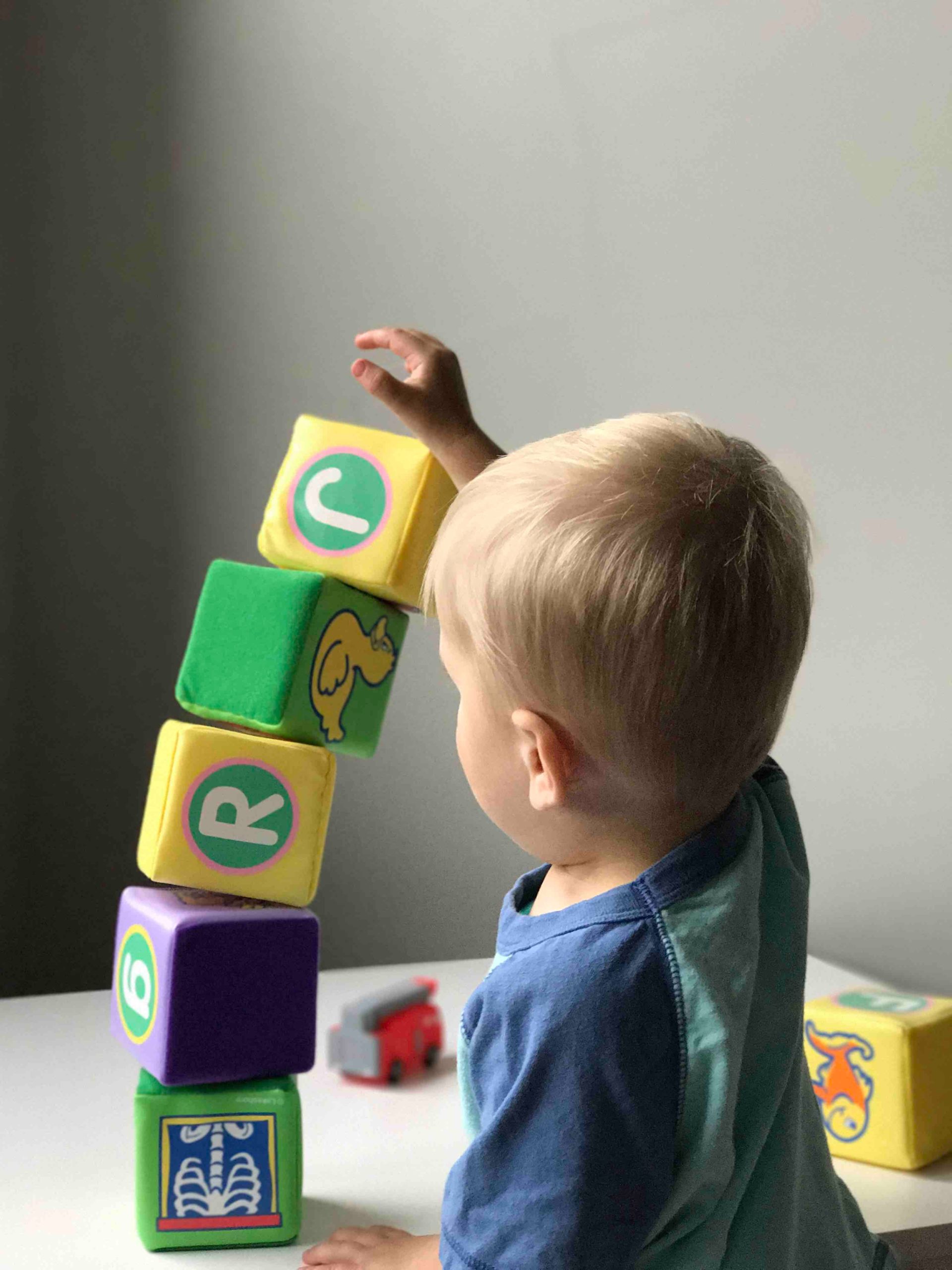Play Based Speech Therapy
by Lauryn Bates, M.S., CCC-SLP
Kids Place Speech Language Pathologist
Play based speech therapy is a common approach used by speech-language pathologists that creates engaging and meaningful experiences for their patients. It is commonly used for young children, but it can continue to be used into the elementary years. Play based therapy can include toys, songs, games, social interactions, crafts, and books.
Your speech therapist will select activities that will naturally target your child’s goals through play. Play based therapy is fun for children and keeps them engaged. Everything we say and do during the play routines helps the child develop his/her speech and language skills. Play also helps develop early cognitive skills such as imaginative play, problem solving, memory, thinking, and reasoning skills.
This approach is child-led, meaning that we follow the children’s lead and see what they are interested in. We meet the child where they are at and then we build and expand on our child’s interests so that we can expand those play routines. When we scaffold our play, we analyze what the child is doing and then create situations where we stretch the child’s language, speech, or cognitive skills by adding in one more element of play that makes the play more complex.
For example, if you’ve seen your child pretending to cook food by using a spoon and bowl, we could add in one more sequence to the play routine such as having your child pretend to feed herself/himself or a toy. We could create a situation where we pretend the soup is too hot so we need to think of ways to cool it down, such as pretending to blow on the spoon or pretending to add a block to represent ice.
Play is natural for most children. Most children enjoy engaging with favorite toys and being engaged in social interactions with others. We see that when children are more engaged and enjoy the interactions, they want to keep the activity going which allows them to be exposed to more learning opportunities. Children can build on what they know during play routines. Additionally, play can happen anywhere, such as during bath time, mealtime, outside, or in the car.
Play-Based Speech Therapy Activity Examples
“Wash”
- You could play a game of Simon Says during bath time, such as “Simon says wash your tummy.” If your child is starting to say some words, allow them the opportunity to tell you where to wash. You can start out by saying “Simon says wash your …” Pause and wait for your child to state a body part.
- During play with toys, you could have your child wash his cars or trains. Talk about how the vehicles are dirty or clean or you could sequence the events to wash the vehicles. For example: “First we need to add soap to the water. Then we need to mix the soap and water to make the water soapy. Next, we need to scrub the train.”
- You could make Little People animals dirty by coloring them with washable markers and then have your child give them a bath to make them all clean again. During this time, you could target labeling of animals or action words, such as wash, scrub, and pour.
“Hide”
- Hide items around the room, giving clues so that your child can find them. Put items ON the chair, IN the shoe, or UNDER the table. You’ll be teaching your child spatial concepts while they are trying to find items.
- Hide different items and have your child find the items based on object function or description. For instance, you could hide a cup and say, “Find the item that we drink out of” or you could hide an animal and say, “Find the animal that has whiskers and says meow.”
- You could also have your child find the items and then tell you where they found them or describing the item to you.
In the car
- Play “I Spy” and see if your child can guess what you see. Then it’s your child’s turn to play, encouraging them to give you a hint by describing the item by color, object function, category, etc.
Games
- Feed the Woozle:
- Teach turn taking and sharing in natural contexts. You can also teach your child appropriate social phrases to use during these activities, such as “your turn/my turn,” “great game,” and “That was fun!”
- You can incorporate following directions into the game. For instance, in games like Feed the Woozle, you can work on following 1-step directions (“Feed the Woozle _____”) or you can incorporate 2-step directions into play (“First feed the Woozle ______, then feed it the _______”).
- You can also incorporate spatial concepts when talking about putting the food items ON the spoon and then IN the mouth. If the Woozle didn’t like the food item, he can spit it OUT.
- Pop the Pig:
- You can target /p/ using targeted words, such as “pig,” “pop,” “put in,” and “push.”
- You can expand your child’s utterances. For example, if they roll the die and say “red,” you can expand their utterance by verbalizing “I got red,” “I rolled red,” or “Let’s find red.”
- Instead of rolling the die, you could provide opportunities to follow directions.
- 1-step: Feed the pig a purple burger.
- 2-step: First feed the pig a purple burger, then feed the pig a yellow burger.
For more information about play based speech-language therapy, please talk to your child’s speech-language pathologist on ways you can incorporate your child’s goals into play themes at home. Reach out to Kids Place Pediatric Therapy today!







